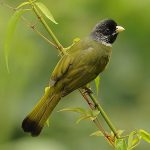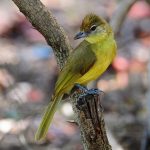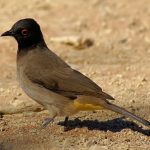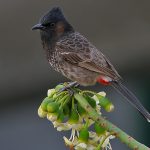Himalayan bulbul
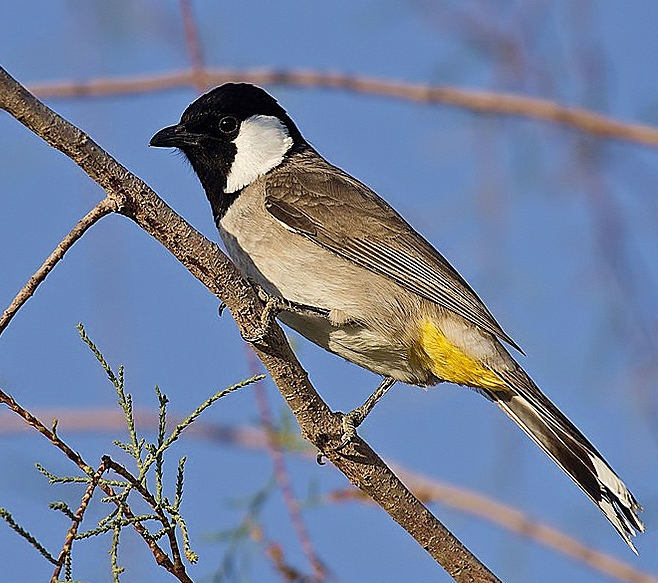
 |
| Photo by Jerome Boisard (Flickr) |
Common name:
Himalayan bulbul (en); tuta-de-faces-brancas (pt); bulbul à joues blanches (fr); bulbul de mejillas blancas (es); weißohrbülbül (de)
Taxonomy:
Order Passeriformes
Family Pycnonotidae
Range:
This species is found along the southern foothills of the Himalayas, in Bhutan, Nepal, northern India, northern Pakistan and marginally into Afghanistan and Tajikistan.
Size:
These birds are 18-20 cm long and have a wingspan of 25-28 cm. They weigh around 30 g.
Habitat:
They are mainly found in tropical and sub-tropical moist forests and scrublands, but also in rural gardens and even within urban areas. The Himalayan bulbul is present at altitudes of 300-2.400 m.
Diet:
These birds are omnivorous, eating insects such as ants, grubs and beetles, and other invertebrates, as well as fruits, berries, seeds, buds and nectar.
Breeding:
Himalayan bulbuls breed in March-August. The nest is a small cup made of dry stems, grasses and shreds of vegetable fibres, and lined with finer materials such as dry grass stems or grass roots. It is placed on a thorny scrub or low tree branch, up to 2 m above the ground. There the female lays 3 pinkish eggs with red speckles, which are incubated for 12 days. The chicks fledge 9-11 days after hatching. Each pair may raise 2-3 broods per year.
Conservation:
IUCN status – LC (Least Concern)
This species has a relatively large breeding range and, although the global population size has not been quantified, the Himalayan bulbul is described as generally common to abundant. The population is suspected to be increasing as the species benefits from deforestation.








